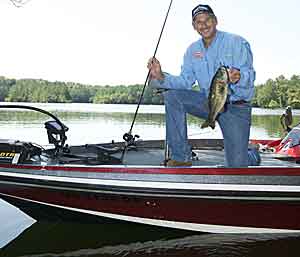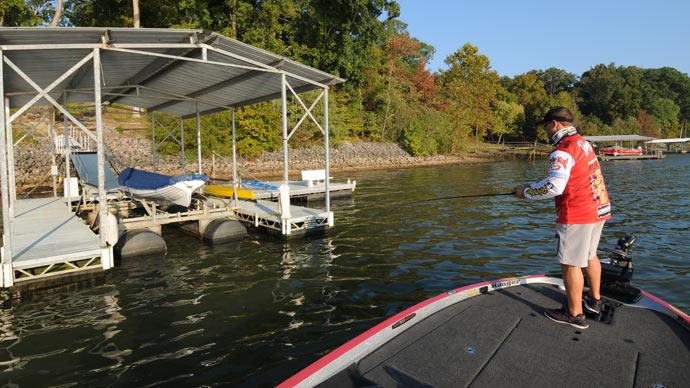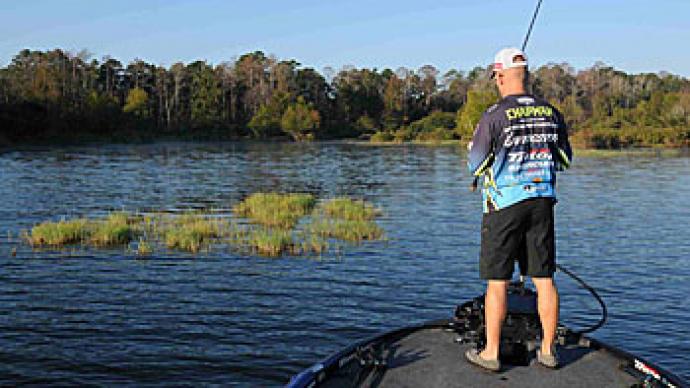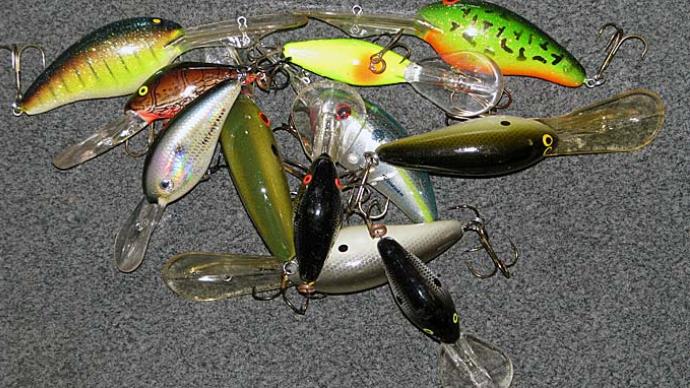
The terminal gear in your tackle box may not be as intriguing as your fishing lures, but those seemingly insignificant items play an essential role in bass fishing success.
Years ago, anglers didn’t give hooks and sinkers much thought. But as we experimented with new techniques, we discovered that the sizes, shapes, and styles of those items can affect how many bites we get.
Terminal tackle has become so important that experienced anglers devote separate tackle boxes to them. For example, I have one small utility box for tube lure hooks and weights, one for Carolina rig accessories, and another for worm weights and hooks. That keeps them tidy and easy to find.
Here’s how I match my hooks and sinkers to the soft-plastic lures I use:
HOOKS: There are a lot of theories about what size and style of hook you should use with plastic worms. As a rule, I use the largest hook possible, provided it doesn’t impede the worm’s action. For example, I use a 4/0 Mustad hook for worms measuring 6 to 8 inches and a 5/0 or 6/0 hook for larger worms. If I drop down to a 4-inch worm, I use a 3/0 hook, but it will be a flipping-style hook with a bigger bite.
I don’t like worm hooks with a narrow gap between the point and the shank. With a wider gap hook, you’re more likely to bury the barb into the gristle of the fish’s mouth and not in the thin membrane where it can tear loose.
I also want a hook-heavy enough to drive the point in without the hook flexing or bending during the battle. One exception would be when I use floating, soft, or a lizard. With those lures, the lighter wire is better because it doesn’t add weight to the bait. Heavy hooks cause floating soft plastics to nose-dive instead of hovering horizontally in the water, making them effective.
SINKERS: The proper sinker size is just as critical. I use a 3/16-ounce bullet weight for fishing worms in water less than 5 feet deep. If I’m fishing deeper or where the wind is blowing, I’ll go to a ½- or 5/8-ounce to keep the bait closer to the bottom.
My primary objective is to select a sinker that allows me to move a lure through cover yet is heavy enough to feel the bait each time it moves. If you go too light, you’ll lose the feel of the bait, or you may move it too far from the cover.
When pitching worms into submerged grass like hydrilla or milfoil, you need a heavy sinker to penetrate the matted surface and go to the bottom. But if you’re working a worm through scattered patches of shallow grass, a smaller sinker is best because it won’t hang up as much.
I also avoid shiny sinkers. Eco Pro Tungsten has a full line of painted sinkers that come in various styles to match your style of fishing.
Some people prefer to peg the sinker to the line, but I want mine to slide on the line because I miss more strikes with a pegged sinker. The only time I peg it against the line and near the lure is when I’m flipping or pitching into cover and want the lure to stay against the sinker.
When you’re missing strikes, losing fish, or not getting bites, look closer at your hooks and sinkers. A simple size or style change may solve the problem.
You can find more articles, quick tips, and more at HankParker.com.




